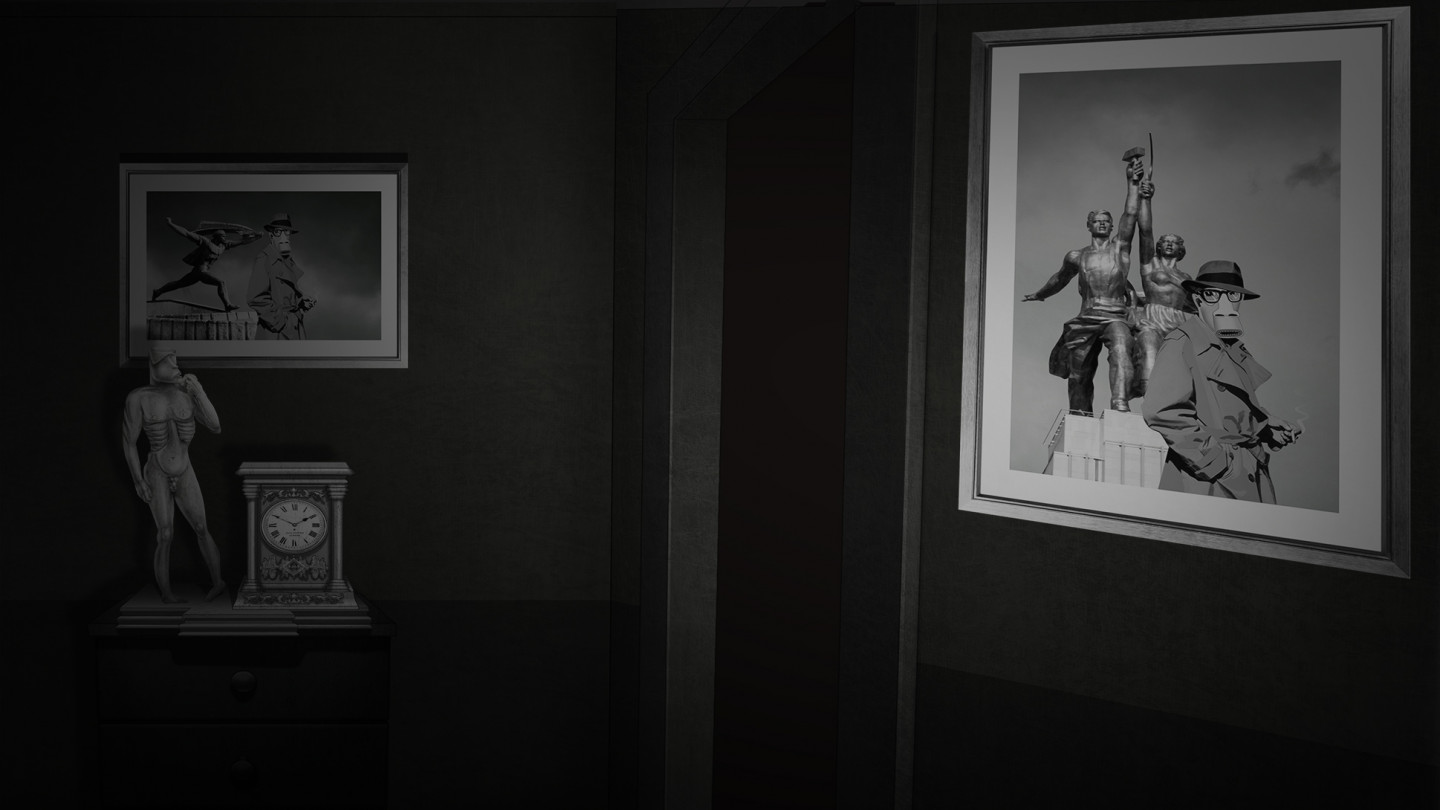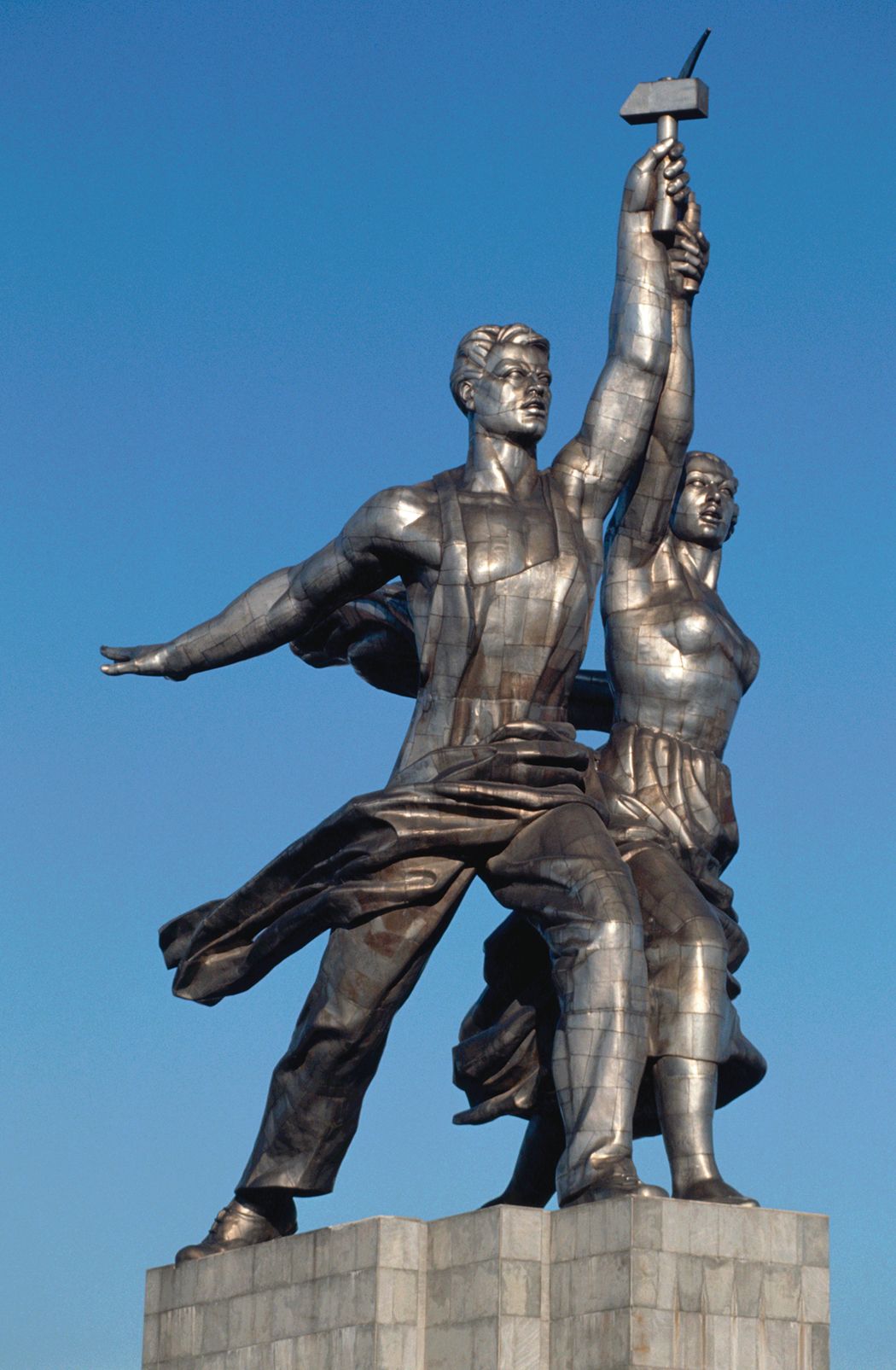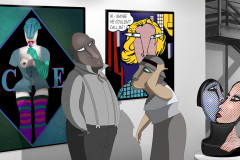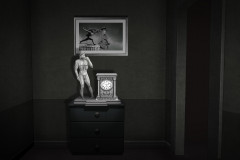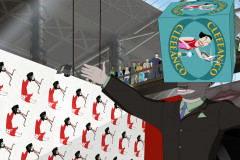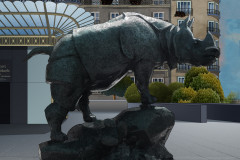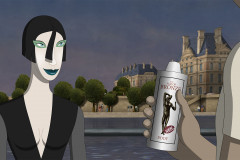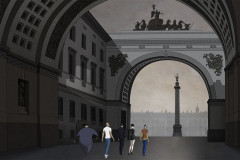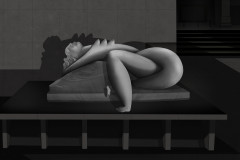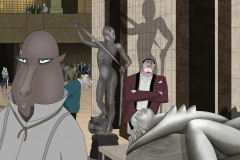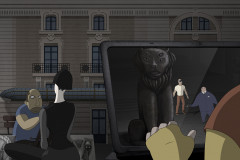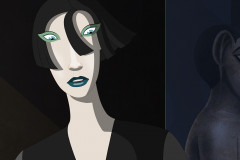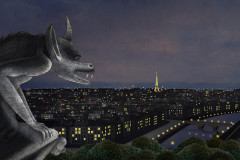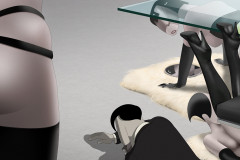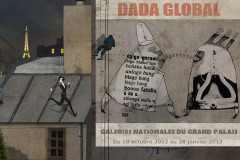Muhina, Vera (1889-1953): Munkás és kolhozparasztnő, 1937 (acél, 24,5 m magas), Moszkva. Az 1937-es párizsi világkiállítás szovjet pavilonjának tetejére készült hatalmas emlékmű a szovjet szocialista-realista művészet legismertebb alkotása. A Ruben Brandtban Cooper ex-CIA-ügynök pózol előtte egy fényképen, melyet lakásának falán láthatunk.
Ha láttál már a második világháború után készült szovjet/orosz filmet, akkor nagy valószínűséggel találkoztál már ezzel a szoborral, amely 1947-ben bekerült a máig létező, legjelentősebb szovjet/orosz filmgyár, a Moszfilm logójába, s számos film elején forog körbe... A rozsdamentes acélból készült, 185 tonna súlyú szobor a sztálini Szovjetunió erejét, lendületét és öntudatás hívatott jelképezni, s micsoda véletlen: pont a szintén erődemonstrációra készülő hitleri Németország pavilonjával szemben kapott helyet a kiállításon. Természetesesn a hivatalos ideológia is megjelenik a kompozícióban: a munkásosztályt kezében kalapáccsal egy férfialak, a termelőszövetkezetekbe (kolhozokba) kényszerített parasztságot pedig a sarlót tartó nő jeleníti meg teljes egységben – így máris egymás mellé kerülnek a szovjet zászlóban is megjelenő jelképek, a sarló és kalapács. A nagypolgári származású, képzőművészeti tanulmányait Párizsban végző Muhina alkotásához a párizsi Louvre-ban található görög szobor, a Szamothrakéi Niké szolgált előképül, mint ahogy sok más esetben, itt is megfigyelhető, hogy a szocialista realizmus az antik görög szobrászat megoldásait követi. A szobor Párizsban is lelkesedést váltott ki, még az ott-tartása is felmerült, de aztán mégis visszaszállították Moszkvába (ahogy odafelé, úgy visszafelé is: 60 darabra szétszedve, 24 vasúti kocsiban elosztva), s a népgazdasági eredményeket bemutató kiállítási terület előtt állították ki.
Muhina, Vera (1889–1953): Worker and Kolkhoz Woman, 1937 (steel, 24.5 m tall), Moscow. Created for the top of the Soviet pavilion at the 1937 Paris World’s Fair, this monumental sculpture is the most iconic example of Soviet socialist realist art. In Ruben Brandt, Collector, we see a photograph of former CIA agent Cooper posing in front of it, hanging on the wall of his apartment.
If you’ve ever seen a Soviet or Russian film made after World War II, chances are you’ve encountered this statue—it became the logo of the still-operating Mosfilm studio in 1947 and spins into view at the beginning of many films. Made of stainless steel and weighing 185 tons, the sculpture was intended to symbolize the strength, dynamism, and consciousness of Stalin’s Soviet Union. And by no coincidence, it was placed directly opposite the pavilion of Nazi Germany, which was also aiming to showcase power.
Official ideology is fully embedded in the composition: the male figure with a hammer represents the working class, while the woman with a sickle symbolizes the peasantry forced into collective farms (kolkhozes). Together, they unite the iconic Soviet symbols of the hammer and sickle, also found on the national flag. Vera Muhina, who came from a bourgeois background and studied fine art in Paris, based her design on the Greek statue Nike of Samothrace, housed in the Louvre. As in many other cases, socialist realism here draws from classical Greek sculptural traditions.
The statue generated great enthusiasm in Paris—there was even discussion of keeping it there—but it was ultimately returned to Moscow. Like on its journey to France, it was disassembled into 60 pieces and shipped back in 24 railway cars. It was then installed in front of the Exhibition of Achievements of National Economy, a major Soviet exhibition site.






